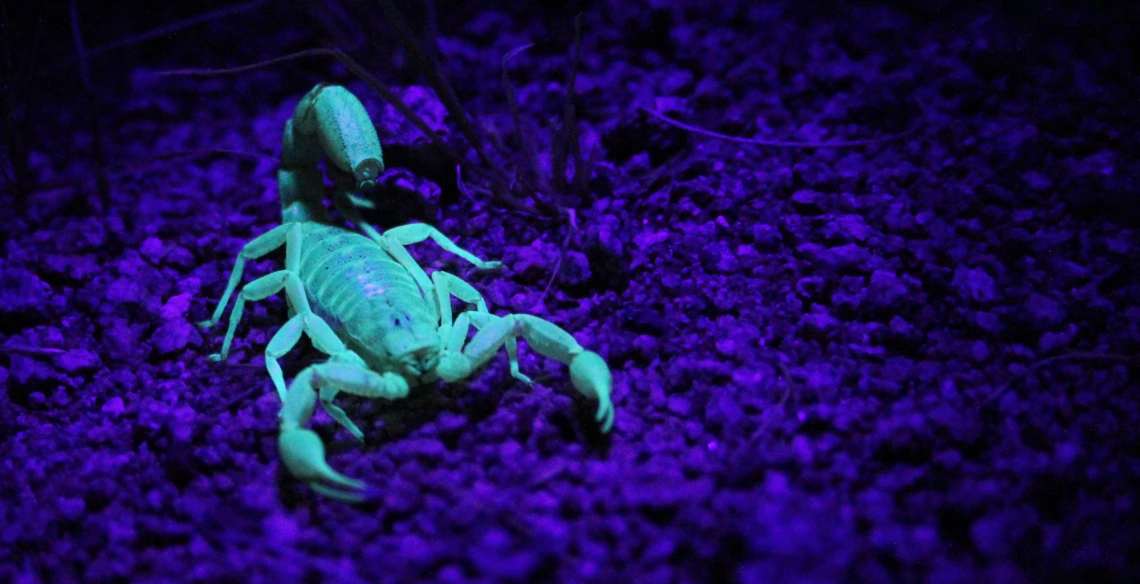Engineering Students Catalog Biodiversity at Saguaro NP BioBlitz
Students get to grips with biodiversity and other environmental issues related to the lands they end up excavating and constructing on.

A scorpion found by the UAAEG team glows under blacklight at the Saguaro National Park BioBlitz.
A team of UA Engineering students joined thousands of other volunteers recently in the Oct. 21-22 BioBlitz at Saguaro National Park.
The National Park Service estimates that 2,200 students representing 60 schools took part in the mammoth field trip, along with 1,500 weekend wildlife buffs and more than 100 wildlife experts.
The 11-person UA Engineering team consisted of members, friends and family of the UA Association of Environmental and Engineering Geologists, or UAAEG, which is based in the department of mining and geological engineering.
The National Park Service, National Geographic, Arizona-Sonora Desert Museum and the Friends of Saguaro National Park organized the BioBlitz to gain a greater understanding of Sonoran Desert biodiversity, which they achieved by recording as many park species as possible during a 24-hour period.
"Part of the mission of our student group is to expose engineering students to the biodiversity and other environmental issues related to the lands we end up excavating and constructing on," said UAAEG President Johnny Lyons-Baral, a master's student in geological engineering. "The BioBlitz was a fun and exciting way to see just how much is out there and to meet the people who are fighting to protect it."
The UAAEG team took part in the insect count at 10 p.m. on Friday night. "We had to drive way out to the darker west side of the Tucson Mountains and up a long, sinuous dirt road," said Lyons-Baral. "We eventually noticed some lights out in the vast desert wilderness, and arrived to find two white sheets set up covered in insects." One of the white sheets at the main count site, explained Lyons-Baral, was illuminated by regular light and the other by blacklight, which causes some insects to glow in the dark.
The count site was run by two visiting entomologists, Robin DeLaPena and Jim Louderman from the Field Museum of Natural History in Chicago. "Our mining students were taking photos of scorpions, walking sticks and spiders around every turn," Lyons-Baral said. He added that DeLaPena described the solifugid found by third-grader Ash Lyons as "the find of the night." The bulbous sun spider -- also known as a camel spider or wind scorpion -- was about 2 inches long. Ninth-grader Austin Baral found a large wolf spider.
"It was a great night had by all," Lyons-Baral said. "And hopefully a memory that will remain for those engineering moments that require patience and tolerance of the environmental permitting process."

